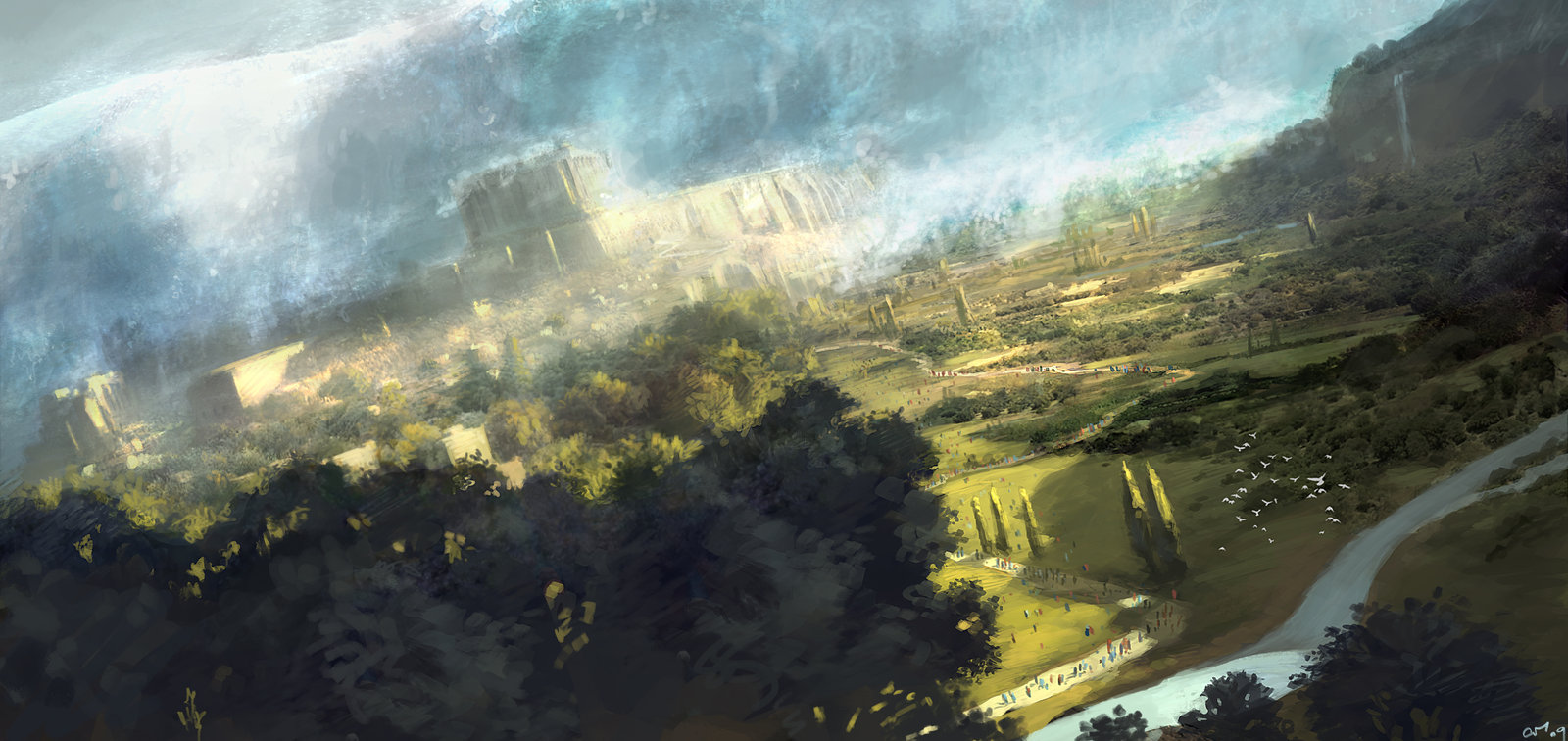Atlantis was not that big it was a palace built on a mountain surrounded by a Island according to the ancient Egyptians. They called it the land of
Amenti
In the 1180 BC Harris papyrus it is called
Ataka
Its historical section mentions that Setnakhte (1189–1186 BC), Ramesses III’s father and predecessor, restored order and stability to Egypt after a time of internal civil conflict, expelling Asiatic followers of Irsu. Ramesses III himself reorganized the state bureaucracy and the army and fought wars against the Peoples of the Sea and claims to have subdued them and made them subjects of Egypt.
The Medinet Habu Tablets clarify that the Sea Peoples, as prisoners, declared: “Our islands are uprooted and carried away. The might of Nun [ocean] broke forth and fell in great wave on our towns and villages. The head of their cities has gone under the sea; their land is no more” (inscriptions 37, 46, 80, 102 & 109).
Etelente
is another Egyptian name for Atlantis. The Hanebu was a sea people from from the sunken Kingdom of Neteru who Pharaohs had to fight to keep away from the lands of the Nile.
Egyptians referred to their lands of the dead as lying West in the middle of the ocean, in the ancestral homeland called Sekhet-Aaru ‘the field of reeds’,
Aaru, Alu and Amenti
The Greeks referred to Atlantis as
Hesperides
The Fortunate Isles.
Dating
The 9,000 BCE date is incorrect since the priests of Ancient Egypt used lunar years to record history — providing a date nearer to the time of the eruption at Thera for the date of the Atlantean cataclysm. It is important to mention, is that if you substitute aruoras or ‘side’ for stadia, the dimensions of Atlantis as described by Plato, you get a much more accurate and believable picture of what Atlantis really looked like.
The Minoans thrived between 3000 to 2000 BC, and reached its peak in the period between 2000 and 1580 BC. The eruption of Thera was between 1550 and 1600 BC — some time before the time of Ramses III when he declared on the walls of Medinet Habu that “the whole delta of the Nile is flooded by the sea.” Later he states, as does the archeological evidence, that there were vast fires in the Near East: “Libya became a desert; a terrible torch hurled flame from heaven to destroy their souls and lay waste their land [as] their bones burn and roast within their limbs [and] the Nile was dried up and the land fell victim to drought” (Tablet 105). Again, like Homer, the fires are said to be the result of a source from outside of the Earth.
Links to the Goddess of the dead
Amentet (Ament, Amentit, Imentet, Imentit) was the Egyptian goddess and friend of the dead, and the personification of the Land of the West,
Amenti
It was she who welcomed the deceased to their new dwelling place in the netherworld. She was also a goddess who helped with the rebirthing process, and thus a goddess of fertility and rebirth, who regenerated the deceased with food and water. She was depicted as a beautiful woman as wearing the hieroglyph of the west.
On her head, carrying a scepter and the ankh of life in her hands. She is occasionally seen as a winged goddess, when linked to the goddesses Isis and Nephthys. The standard of the west is usually a half circle sitting on top of two poles of uneven length, the longer of which is tied to her head by a headband. Often a hawk or an ostrich feather is seen sitting on top of the standard. Occasionally, she is shown wearing just the hawk on her head. She was believed to live in a tree at the edge of the desert, a place where she could watch the gates to the underworld. She was often shown not only in tombs, but on coffins, being a goddess of the dead.
To word ‘Amentet’, as used by the Egyptians, was applied to the west bank of the Nile — Egyptian cemeteries and funerary places were all on the west. To the Egyptians, west was a direction linked to death. Amentet was also the name of the underworld — the place where Ratraveled during the night. The place where the sun set was also called by this name, being the entrance to the land of the dead according to Egyptian belief. Amentet — ‘She of the West’ — was therefor the goddess of not only the land of the dead, but also of the entry to the underworld, and of the west itself.
Standing at the entry to the land of the dead, Amentet offers food and drink to the deceased, regenerating them. This is connected to regeneration of the dead — the rebirth of the souls in the afterlife. Thus she is also a fertility goddess, who was often represented by other fertility-related goddesses such as Hathor, Isisand Nit, Mut, and Nut. She was also connected with Nephthysand Ma’at. As the goddess Hathor-Amentet, she was a solar goddess of the west, paired with Ra-Horakhty, who was believed to regenerate and welcome the newly deceased. She was sometimes depicted with Iabet, the goddess of the east.

